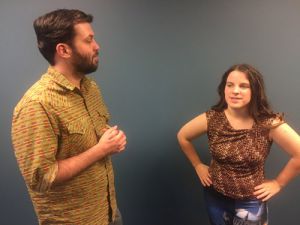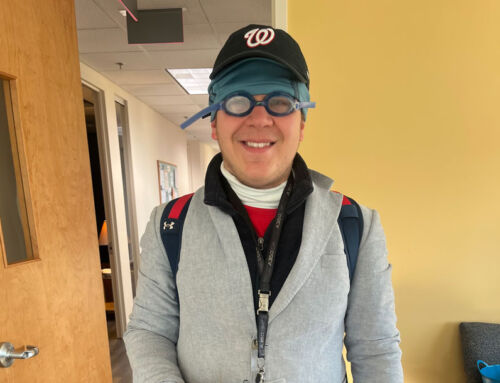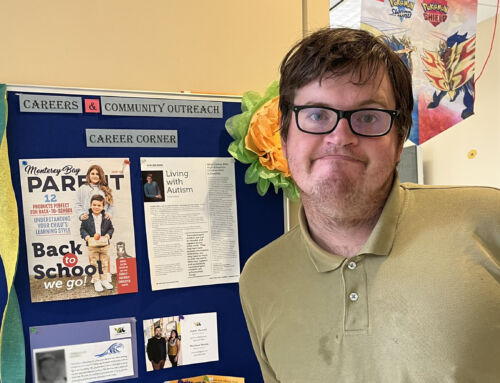By Sharon Heller, Director CLE Denver

So where does this leave individuals with neurological and learning differences who have even greater difficulty communicating successfully? The way I see it, we are all in the same boat. Clear communication is challenging; it can be convoluted, a battlefield of slip-ups, hidden agendas, failures to get our point across, hurt feelings, misunderstandings, etc… And some of us benefit more than others from concrete training and practice in learning and understanding the nuances of communication.
In thinking about the population of students that I work with at CLE I can group struggling communicators in a few main categories. You likely know someone in your family or workplace that is described below, and you may even find yourself falling into one of these categories.
1. The "Inhibited" Communicator
 These people are very cautious in what they say to others. In fact, they have a lot to say, but are afraid of making a mistake and don’t want to say anything that will be perceived in a negative way. They care a great deal (perhaps too much) about what others think and they don’t want to lose friends, be judged, or be misinterpreted. Inhibited communicators can benefit enormously from simply practicing speaking. With guided help and within a safe social environment I encourage these individuals to practice, practice, practice getting the words out. They can practice saying what they want to say and practice making commentary and “I” statements. Once the inhibited communicator starts to speak, I find what they have to say is vital, contributes a lot to others, and helps them become more connected to their own sense of self. Feeling safe, becoming willing to make a mistake, and practicing a lot is crucial for these individuals.
These people are very cautious in what they say to others. In fact, they have a lot to say, but are afraid of making a mistake and don’t want to say anything that will be perceived in a negative way. They care a great deal (perhaps too much) about what others think and they don’t want to lose friends, be judged, or be misinterpreted. Inhibited communicators can benefit enormously from simply practicing speaking. With guided help and within a safe social environment I encourage these individuals to practice, practice, practice getting the words out. They can practice saying what they want to say and practice making commentary and “I” statements. Once the inhibited communicator starts to speak, I find what they have to say is vital, contributes a lot to others, and helps them become more connected to their own sense of self. Feeling safe, becoming willing to make a mistake, and practicing a lot is crucial for these individuals.2. The "Overly Blunt" Communicator
 These individuals have no filter and will say whatever comes to mind even if it’s the wrong place and wrong time. I’ve learned to love blunt communicators because I’m never left wondering what they are thinking. Unfortunately, blunt communicators often leave in their wake a trail of hurt feelings and upset. They often feel frustrated in their social relationships. These communicators benefit from repeated practice and perspective taking. It’s crucial for these folks to learn how to put themselves in someone else’s shoes and to learn to develop empathy and a deeper understanding of how their words are received by others. Blunt communicators are usually quite unaware of the tone of their voice or how offensive their brash response was. These communicators are helped by frequent feedback from those they are communicating with and detailed explanation for how what they said was perceived.
These individuals have no filter and will say whatever comes to mind even if it’s the wrong place and wrong time. I’ve learned to love blunt communicators because I’m never left wondering what they are thinking. Unfortunately, blunt communicators often leave in their wake a trail of hurt feelings and upset. They often feel frustrated in their social relationships. These communicators benefit from repeated practice and perspective taking. It’s crucial for these folks to learn how to put themselves in someone else’s shoes and to learn to develop empathy and a deeper understanding of how their words are received by others. Blunt communicators are usually quite unaware of the tone of their voice or how offensive their brash response was. These communicators are helped by frequent feedback from those they are communicating with and detailed explanation for how what they said was perceived.3. The "One-Sided" Communicator
 They may be a bit in their own world and start talking when no one is listening and keep talking long after they have lost everyone’s attention. This person is likely unaware of how important it is to pay attention to social cues such as body language. Reading body language is a highly attuned art form that comes naturally to some and is like rocket science for others. Not everyone knows that if you have your head down on the table and are yawning profusely that you are no longer interested in what they are saying. Like the other ineffective communication styles above, teaching one-sided communicators how to engage in reciprocal communication takes a lot of practice and patience. 1:1 role playing, social skills groups, a “my turn-your turn” approach, using audio or video recording to show their one-sided dialogue, and ongoing feedback are effective ways to assist these abrasive communicators in developing a better skill set.
They may be a bit in their own world and start talking when no one is listening and keep talking long after they have lost everyone’s attention. This person is likely unaware of how important it is to pay attention to social cues such as body language. Reading body language is a highly attuned art form that comes naturally to some and is like rocket science for others. Not everyone knows that if you have your head down on the table and are yawning profusely that you are no longer interested in what they are saying. Like the other ineffective communication styles above, teaching one-sided communicators how to engage in reciprocal communication takes a lot of practice and patience. 1:1 role playing, social skills groups, a “my turn-your turn” approach, using audio or video recording to show their one-sided dialogue, and ongoing feedback are effective ways to assist these abrasive communicators in developing a better skill set.Perhaps we can start to be a stronger support system for those who struggle if those of us gifted with stronger communication skills can simply acknowledge the vast challenges and heavily nuanced realm of communication that so many face. What if it wasn’t a given that people knew how to communicate effectively? Because the truth is, it’s not a given. It’s our continued willingness to be patient, give feedback, outline expectations, teach, practice, and keep being patient, that will create the biggest support structure for those around us to expand their skill set. I see this as one of the most valuable aspects of humanity that we can help each other achieve. Care – Connection – Communication, 3 C’s that everyone needs!








